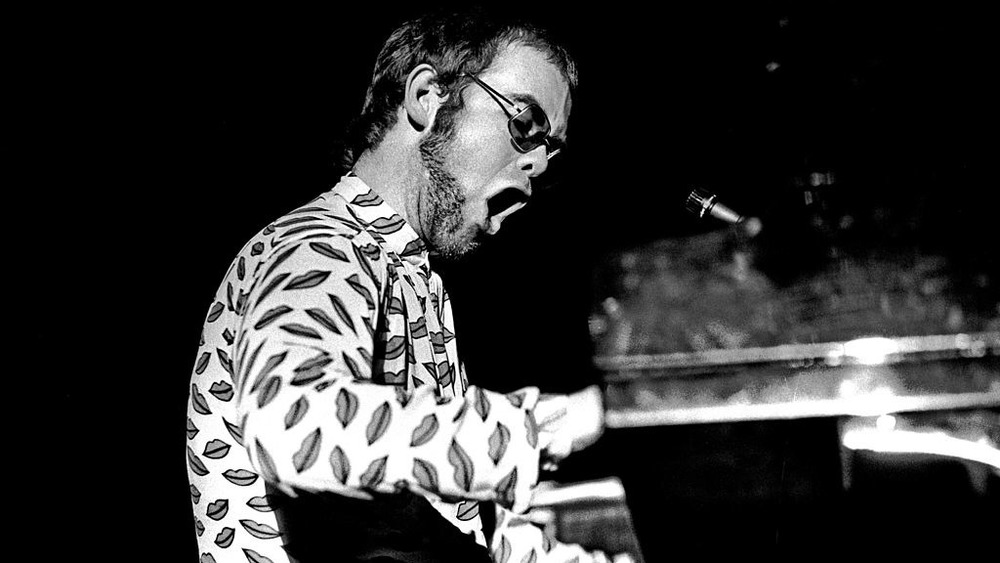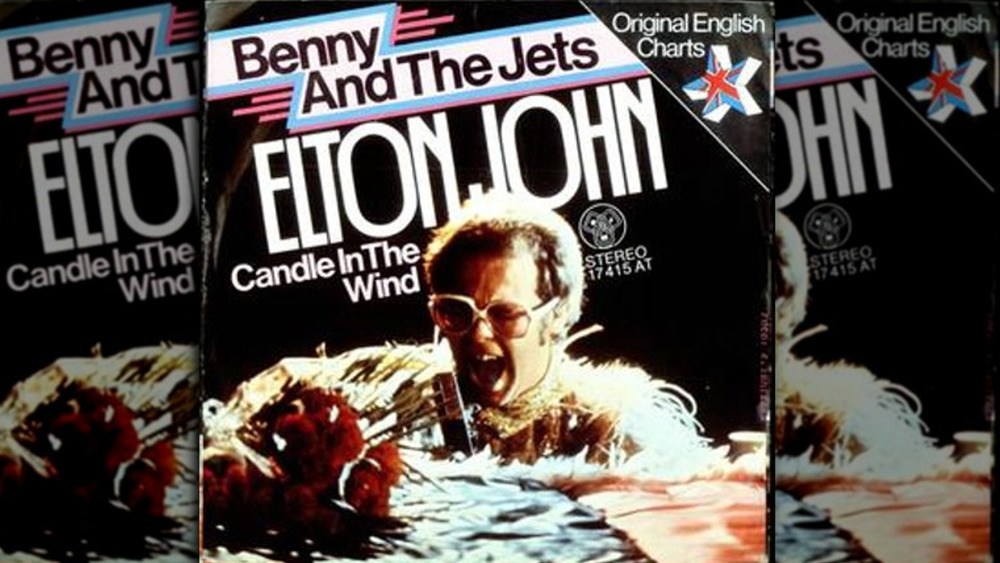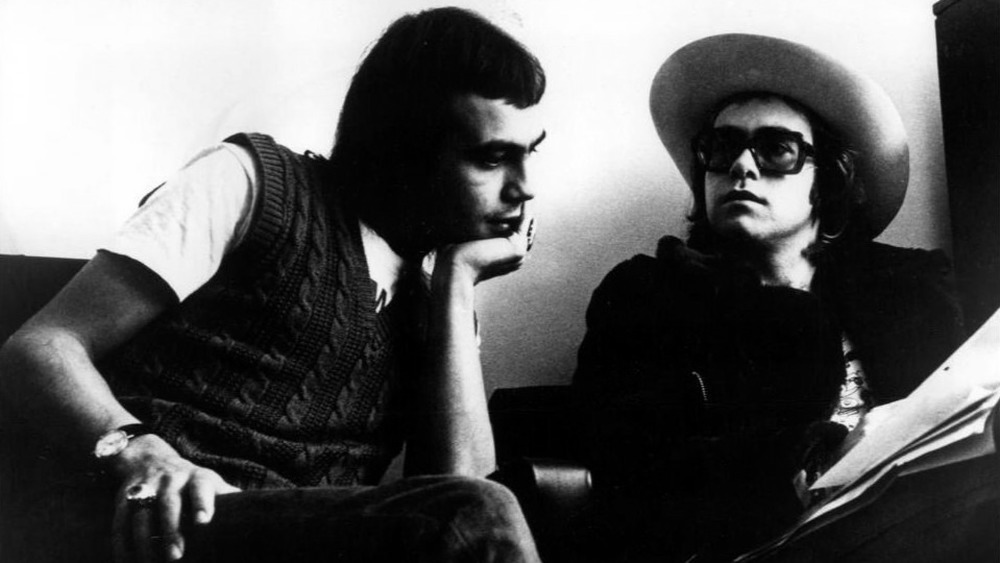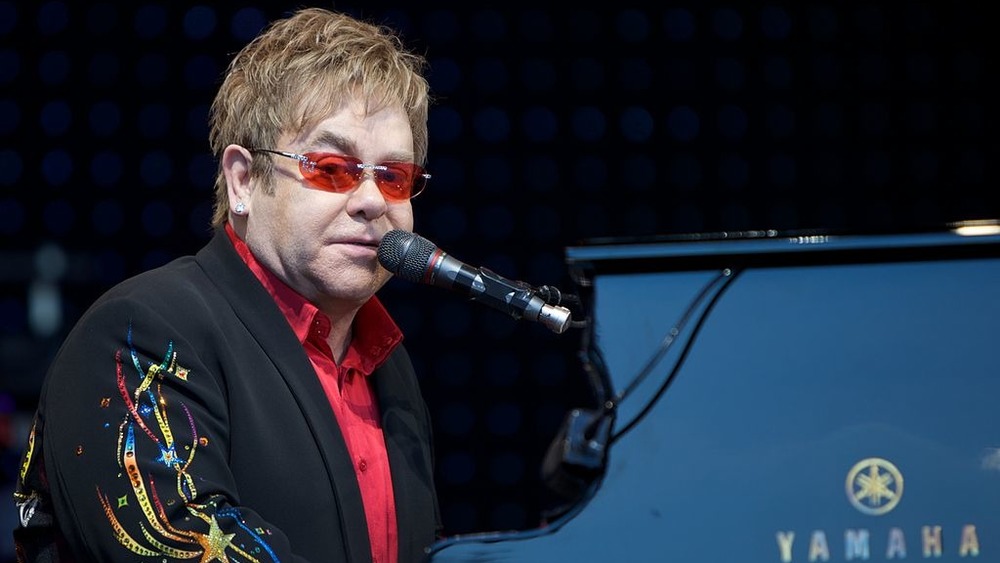The True Meaning Behind Elton John's Benny And The Jets
"Benny and the Jets" (sometimes rendered "Bennie and the Jets") is one of Elton John and Bernie Taupin's biggest hits and most enduring songs. Originally recorded for John's Goodbye Yellow Brick Road album in 1973, he initially didn't think the song had legs. As reported by Ultimate Classic Rock, John considered the song to be kind of odd, and was reluctant to release it as a single. It wasn't until an influential Black radio station in Detroit started playing the song nonstop that it was released, the first step to becoming one of the most recognizable songs in history.
And one reason the song is so recognizable is that oddness. From that first, off-time chord that jumps out of the speakers at exactly the wrong moment to the stomping, robotic rhythm of the piece, the weird off-beat clapping and Elton John's incredibly high falsetto (Society of Rock informs us this was John's best Frankie Valli impersonation), the song is just strange — and as a result, unforgettable.
Despite its fame, many fans don't know what the song is really about. Like all Elton John songs from the first phase of his career, the lyrics were written by Bernie Taupin first, and John added the music and arrangement later, and each brought a subtly different interpretation to the piece. Here's the true meaning behind Elton John's "Benny and the Jets."
It's a satire of the music industry
If you pay attention the lyrics to "Benny and the Jets," it's pretty obvious Taupin is having a laugh over the excesses of the music industry circa 1973. Lines like "we'll kill the fatted calf tonight" and "she's got electric boots, a mohair suit / you know I read it in a magazine" are cheerful jabs at the mythology and publicity machines behind popular music acts.
As The Elton John Song List writes, the song was conceived as gentle satire, making fun of the way rock stars had become better known for their fashion and wild antics than their songwriting or musicianship. This carried over to the musical style of the song. As Society of Rock notes, John arranged the song as a tribute to the "glam rock" style popularized by acts like Gary Glitter and Sweet, bands with over-the-top visuals and epic-sounding songs. The lyrics describe Benny's look in vivid detail, but her music is described as "solid walls of sound" lacking in any sort of detail, underscoring the song's contempt for the modern publicity machine.
It's about a futuristic all-girl punk band
As explained by The Elton John Song List, Bernie Taupin's songwriting process begins with a title. Once he has a phrase he thinks will make a good song title, he builds lyrics that tell a story around it.
What many fans don't realize is that the story in "Benny and the Jets" is science fiction. As reported by Rolling Stone, Taupin said, "I saw 'Bennie and the Jets' as a sort of proto-sci-fi punk band fronted by an androgynous woman, who looks like something out of a Helmut Newton photograph." The song's lyrics are from the perspective of an unnamed superfan of the group who is trying to convince their friends Candy and Ronnie to go see them perform.
According to Society of Rock, when John saw the lyrics, he wanted the music to be "off the wall." The slow, robotic beat is intended to echo Taupin's vision of a futuristic band. According to Esquire, Taupin intended Benny and the Jets to be like "automatons." In fact, Taupin thinks that John's decision to stutter in the chorus is what made the song a smash, because it was "hypnotic" and matched his futuristic, mechanized vision.
It's engineered to sound live for a reason
Many people think that "Benny and the Jets" is a live track, but it's a studio recording. As Rolling Stone reports, the audience sounds were layered on top of the recording by producer Gus Dudgeon, taken from a live show John had played at The Royal Festival Hall a few years later.
The live effects were part of the song's narrative. As Dudgeon explained on Elton John's website, that famous, weird first chord, coming in one bar before the song actually starts, caught his ear and made him think of a live band signaling the crowd that the show was about to start — which is perfect for a song about a futuristic band. So Dudgeon spoke with his sound engineers and decided it would work to "fake-live" the song.
According to Ultimate Classic Rock, when it came time to add in the audience claps, Dudgeon made sure they occurred on the "on" beat instead of the "off" beat, despite the fact that this drives him (and performers) crazy because it can throw the band off time. But that was how English audiences always did it in concert, and he wanted to remain true to life.



